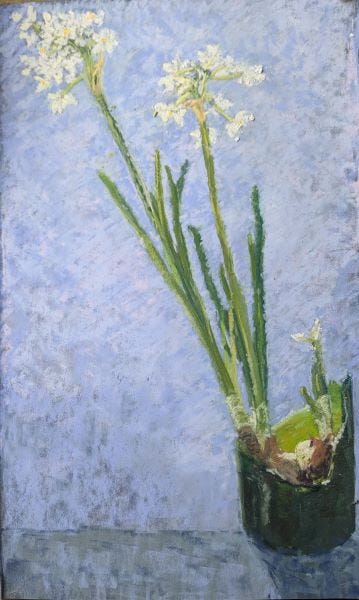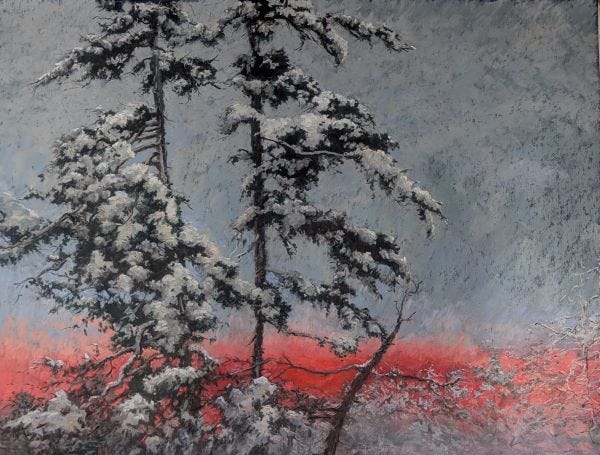I worked a show this fall with a very special group, Designing Women of New England. This is an organization of women ‘artists’ who are jewelers, weavers, potters, painters,etc. Members create their work with the highest levels of skill, vision, and elegance, never sacrificing integrity in the name of commercialism. One member, whom I know to be an empath, came up to me and said, “ I don’t usually say anything to people, but I will say to you, you should paint hope.”
Two days later, I read an article by a psychologist I respect that said, “Hospitality is hope.” I let those two ideas blend and weave and meld together. Hope and Hospitality.What does it take to be hospitable and therefore to embody hope? When I first launched into visual articulation, I studied western elements of painting - color theory, drawing, perspective, and yes, composition. The picture plane is divided into thirds vertically and horizontally, and where those lines intersect are the ‘“sweet spots,” the places to put the focus of the piece. There is geometry and the Fibonacci sequence to help the painter create a piece in which the viewer’s eye lands on the focal point and then travels around the painting. But I was not satisfied with the paintings I created using these tools. Oh, I followed the guidelines, but I did not like the outcome.
I turned to my Asian studies for a completely different way of perceiving visual expression. In Japanese painting, the artist has 3 subsequent goals. The first is for the viewer to think and feel, “Oh I like that!” The next is to inspire the viewer to respond with, “I want to visit!”. And finally, if the painter is truly successful, the viewer wants to become a participant and thus, wants to stay. Consequently, compositional elements begin outside the picture plane, welcoming the viewer inside to explore the empty spaces created by the painted objects. Hospitality.
I want the viewer to enter the world of the picture to come play, or to write their own story that takes place in that world. The painting is an invitation. For the painter, putting that invitation out there might take courage, it also takes courage for the viewer to open up their own sense of wonder and curiosity in order to venture into the unknown world offered to them. What better way to practice these skills than by looking at paintings? And if we build these skills of offering and accepting hospitality, then maybe when we are faced with more stressful situations, reacting by offering hospitality instead of withdrawing will become a reflex.
My attempts to paint hope start with the hospitality of nature, for surely that, of all things, engenders curiosity and wonder, welcoming humans to be part of a greater whole. And then there are explorations into human activity: our faces, our poses, and our choices to witness what hospitality is manifesting that might give us hope.
Epiphany: Open hearted and open- minded curiosity is fundamental to creating and experiencing painting. And in so doing, I can practice a skill that translates to other life situations.








I love your choice of paintings to illustrate this idea!
You are most generous with your words and brush: thank you, Wendilee.